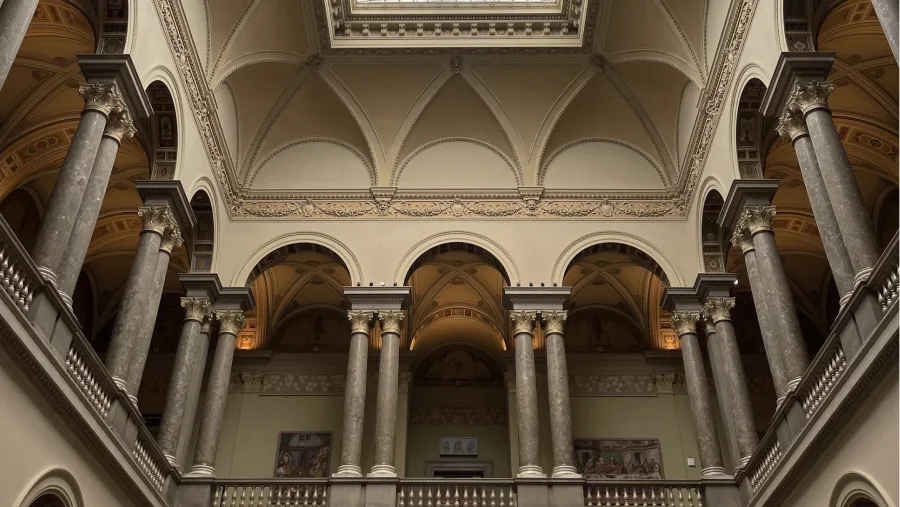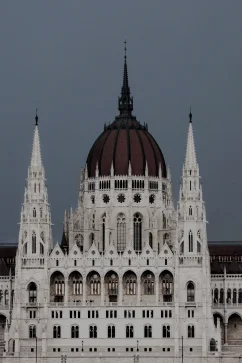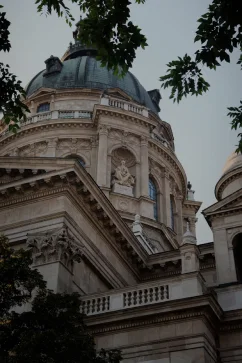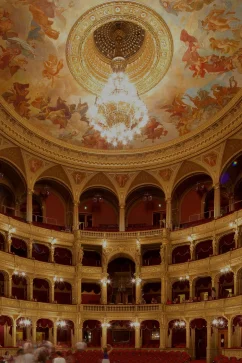Museum of Fine Arts
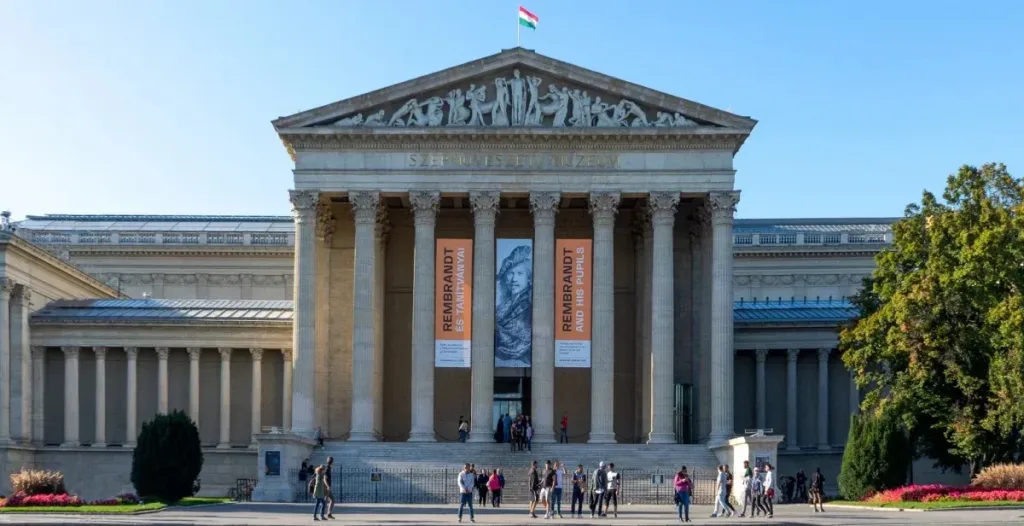
About Museum of Fine Arts
The Museum of Fine Arts in Budapest settled inside the charming cultural tapestry of the city, is a work of aesthetic legacy and inventive expression. Its rich history dates back to the turn of the 20th century and is imagined as a bastion of art appreciation and illumination for eras to come. Renowned for holding the second-largest collection of Egyptian art in central Europe, the museum’s gallery boasts a rich assemblage of artefacts acquired by Hungarian Egyptologist Eduard Mahler in the 1930s, thus representing the splendid art in Budapest. Notable highlights include intricately painted mummy sarcophagi, offering a captivating glimpse into the enigmatic allure of ancient Egyptian civilization. The core of the museum’s classical antiquities collection originated from acquisitions made by classicist Paul Arndt from Munich.
The museum’s building magnificence resounds with the heavenliness of Budapest, drawing visitors into a world where artistic masterpieces come to life amid the city’s dynamic energy. The institution’s initiation was fueled by a collective energy for protecting and displaying the finest works of art, emphasising improving Budapest’s social scene. Over the decades, the art museum in Budapest has advanced into a respected overseer of imaginative treasures, sustaining an environment where imagination flourishes and creativity rises above boundaries.
The Museum of Fine Arts exhibition
The Museum of Fine Arts in Heroes’ Square, Budapest, Hungary, is an emblem of artistic heritage and cultural enlightenment compared to the other museums in Budapest. Constructed between 1900 and 1906 according to the plans of Albert Schickedanz and Fülöp Herzog, the museum exudes an eclectic-neoclassical architectural style, providing a fitting backdrop for its diverse and expansive collection. The Museum of Fine Arts collection, numbering over 100,000 pieces, is primarily composed of international art, encompassing various periods of European art and featuring contributions from renowned estates and individual collectors.
Notably, it features the small equestrian by Leonardo da Vinci and an array of painted wooden sculptures from the German and Austrian regions. The Museum of Fine Arts collection encompasses rotating exhibitions of 10,000 drawings and 100,000 prints, sourced mainly from the Esterhazy, Istvan Delhaes, and Pal Majovsky acquisitions. Noteworthy pieces include studies by Leonardo da Vinci, drawings by Rembrandt, works by Goya, and French acquaintances, providing a comprehensive representation of European graphic art across various periods. While the museum’s collection of 19th- and 20th-century art is relatively younger, it offers valuable insights into the Biedermeier and French art, featuring representatives of the Romantic period, the Barbizon school, and Impressionism.
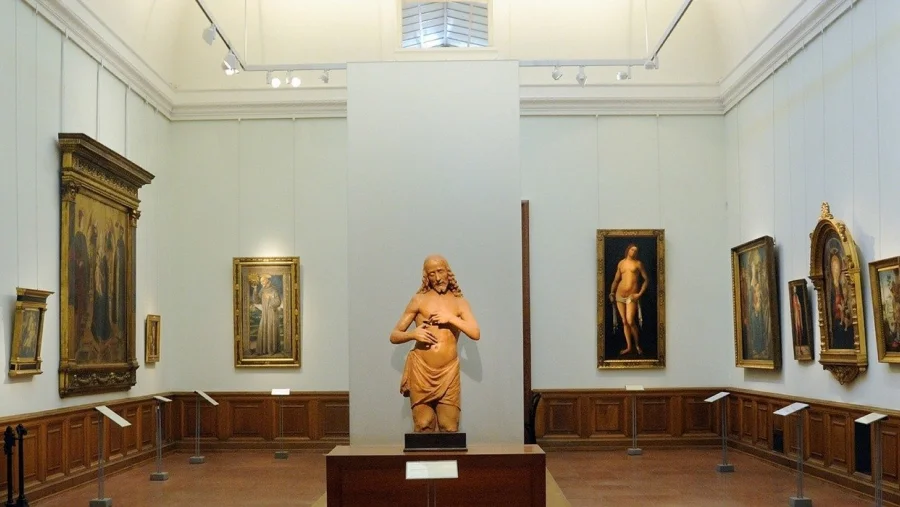
Tips for your visit to the Museum of Fine Arts
- Plan your visit during off-peak hours to explore the exhibits with greater tranquility and avoid crowds.
- Engage with the museum’s guided tours to gain deeper insights into the featured artworks and historical context while making the most of your visit.
- Check the museum’s website for any special exhibitions or events coinciding with your visit to enhance your experience and discover new artworks.
- Museum of Fine Arts’ opening hours are Tuesday to Sunday, 10 am to 6 pm. Do not plan your visit on Monday as the museum is closed.
- Consider purchasing tickets online in advance to skip the lines and ensure seamless entry into the museum, saving you time and hassle.
Tickets for the Museum of Fine Arts
Securing Museum of Fine Arts tickets is a seamless process, with options available for online purchase. Various ticket packages cater to different preferences, including access to temporary exhibitions and curated experiences, ensuring a tailored visit for every art enthusiast.
The full price of the ticket is around HUF 5200, with free tickets available for only the permanent exhibitions and for citizens of Ukraine and the European Economic Area. The tickets are free for children under 6 years old and for senior citizens over 70 years old. Moreover, teachers working in elementary or secondary institutes holding international teacher ID can also be entered free. Moreover, the holders of Budapest Card can be granted one-time free access. However, free tickets can only be obtained from the ticket desk on the day you plan to visit the museum by presenting a proof that makes you eligible for buying the free ticket.
How to arrive to the Museum of Fine Arts
Situated within the cultural tapestry of Budapest, the Museum of Fine Arts is easily accessible via public transportation, with nearby metro stations providing convenient connectivity. Its proximity to Heroes’ Square further enhances its appeal, allowing visitors to delve into Budapest’s historical and artistic narratives before partaking in the museum’s treasures.
Whether arriving by metro, bus, or on foot, the museum’s location presents an effortless journey into the heart of Budapest’s artistic soul. Visitors can check for the Museum of Fine Arts Directions and the Museum of Fine Arts openinghours by contacting us. Additionally, the museum is conveniently located near other cultural attractions, making it easy to plan a full day of exploration in the area. Once inside, visitors can immerse themselves in the rich collection of artworks spanning centuries of artistic expression.
